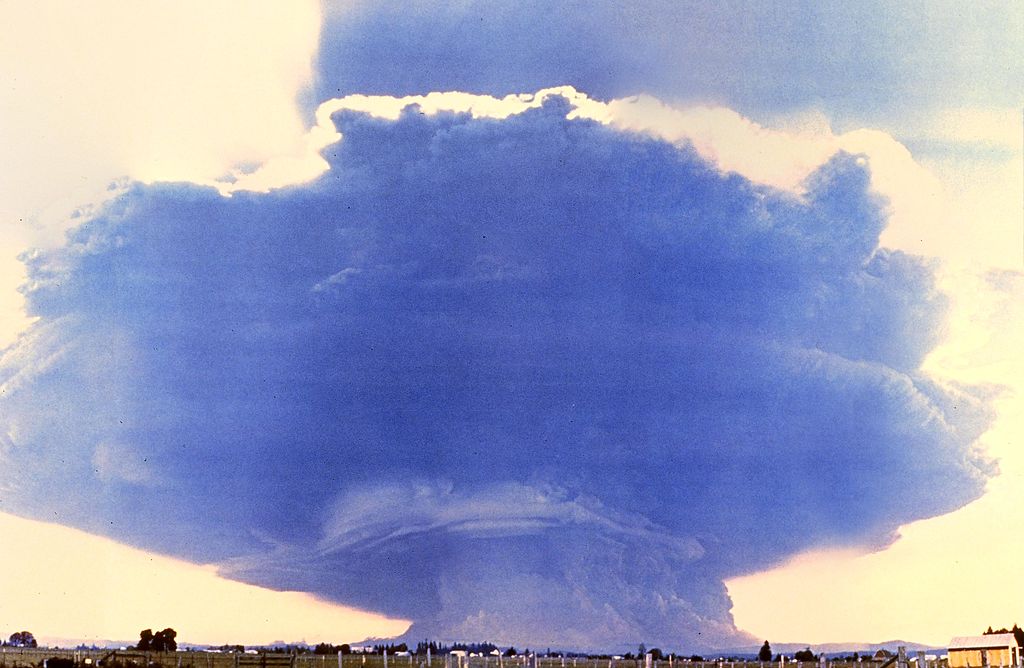I’ve been thinking a lot about Ursula Le Guin since her death on January 22. Here in the Pacific Northwest, she was not only a beloved author but a beloved public figure, active in the Portland community until the very end of her long life. I’ll miss hearing her voice, and I’ll miss her sharp wisdom about worlds real and imagined. Here’s a post I wrote in the summer of 2015 about Le Guin’s history with another great woman of the Northwest—Mount St. Helens.
Late last month, I got to camp with a group of ecologists at the base of Mt. St. Helens, in southwestern Washington state. Some of the scientists had been studying the mountain since shortly after it erupted on May 18, 1980, and they were full of stories about the changes they’d seen over the past thirty-five years. They told me that someone else had been watching the mountain just as long as they had, and that she still watched it every morning. Her name was Ursula Le Guin.
Ursula Le Guin? I said. The Ursula Le Guin?
I’m a fan of Ursula Le Guin for multiple reasons. I grew up reading her fantasy novels, which are not only terrific reads but also brilliantly observant and inclusive. (These days, I love to read her books to Girl Bilbo, who likes them as much as I do.) Last year, I cheered her ferocious public critique of the publishing industry. I knew she’d lived for many years in Portland, not too far from Mt. St. Helens. But really? The Ursula Le Guin?
Yes, and yes.
When I returned home from the mountain, I tracked down a copy of In the Red Zone, the chapbook Le Guin and her friend, artist Henk Pender, produced after a trip to the mountain in October 1981, sixteen months after the eruption. Six poems, four images, a short essay: a little jewel of a book.
The earth fell on the earth. It looked like cloud
but it was dirt: the planet turning on itself.Rock, slag, dust, earthgas, earthfire, earthwork.
A column of boiling stone. Ponderous.
From a distance thunderblue, but in itself earthdark,
grey, brown, black: a mountain inside out.—from “Prologue: Concerning Violence”
Le Guin and Pender had wrangled a one-day permit to travel into the “red zone,” as the area immediately around the mountain was called, and even years later she vividly remembered their frightening hours on ashy, rutted, hogback roads. Meta Lake, a small lake not far from the crater, looked sick and dark. A car, crushed by falling rock, had been surrounded by a chain link fence— “to hold the horror in,” she wrote.
But there were, to everyone’s surprise, signs of life on Mt. St. Helens. The ecologists saw them just weeks after the eruption, and Le Guin saw them, too. There were sprouts of fireweed and pearly everlasting. There was a brownish-orange mushroom the size of a thumbtack. Fish had survived under ice, and gophers had survived underground.
In Portland, Le Guin noticed, everybody took the eruption personally. As the mountain she calls “the Lady” rumbled and the ash fell, some people got mad, some got scared, and some got penitent. But after standing on the mountain, in its forest of flattened trees, Le Guin felt differently: “This has nothing to do with us at all.”
In 2005, almost twenty-five years after that long day in the red zone, Le Guin returned to the mountain with a group of other writers. What had been a gray, silent landscape “was changed—was green—had come alive. Had always been alive,” she wrote in “Coming Back to the Lady,” an essay in the anthology In the Blast Zone. She listened to scientists talk about their initial belief that the eruption had erased all life on the mountain, and about how wrong they had been. (“They said this with jubilation,” she wrote. “That is what is so lovable about real scientists: they rejoice in being wrong.”)
The mountain had recently started making noise again, and sending up occasional puffs of steam, and Le Guin had been nervous about the trip. But when she got ready to sleep on the volcano, her fears disappeared. “I have no explanation,” she wrote. “I guess I felt: well, now I’m here, I’m hers, I’m part of her, like all her trees and birds and lakes and dirt. So what she does I do, and that’s OK. I never thought about it again.”
On a clear day, Le Guin can see the Lady from the window of her study in Portland. She drew the mountain before it erupted and as it erupted, and many times after. I like to think of her at her desk, imagining worlds—and of the Lady in the distance, building a new one.
Top photo: Mt. St. Helens ash cloud, 40 miles wide, 15 miles high, and thunderblue, photographed on May 18, 1980, by Rocky Kolberg. Composite of about 20 separate images. Wikimedia Commons.
